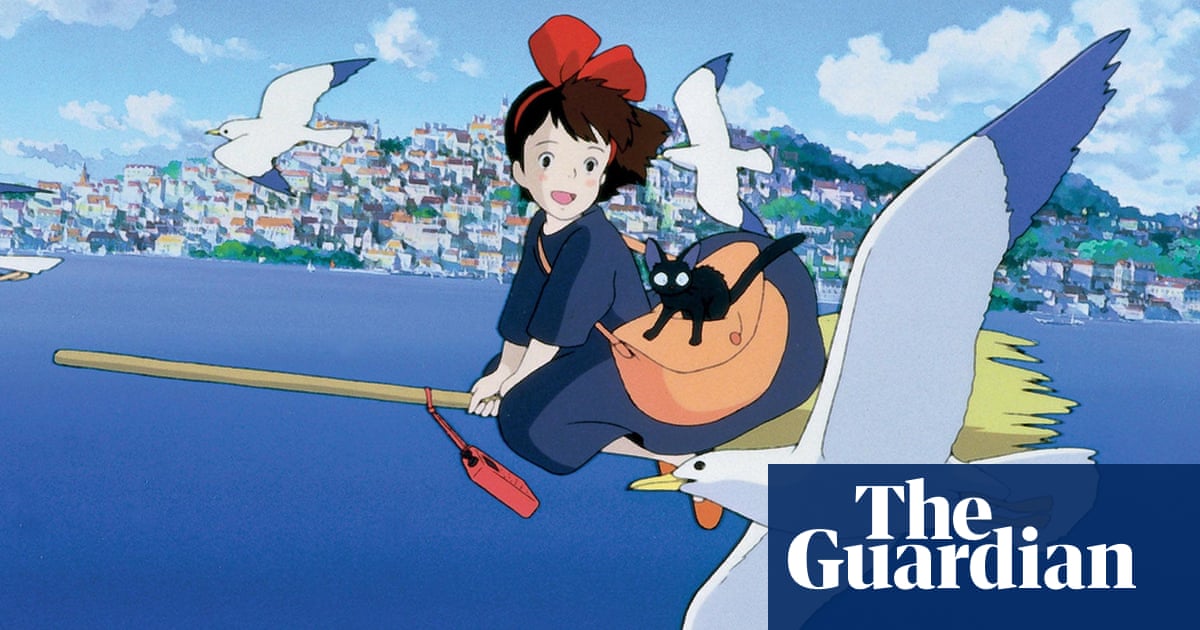Disney,Pixar… Ghibli. For its legions of admirers, the Japanese studiohasn’t just held its own against the American powerhouses, it has surpassed them with the impossible beauty of its hand-drawn animation and its commentary on the ambivalence of the human condition.
Although he would refuse to acknowledge it, much of Studio Ghibli’s success is down to one man:Hayao Miyazaki, a master animator whose presence towers over the studio’s output. Making a feature-length anime the old-fashioned way may require a large and multitalented cast, but Miyazaki is the thread running through Ghibli’s creative genius.
Now, as the studio marks its 40th anniversary, it faces an uncertain future, amid renewed speculation that its figurehead auteur really has wielded his pencil for the last time.
Roland Kelts, a visiting professor at the school of culture, media and society at Waseda University, said Ghibli had failed to anticipate a time when Miyazaki, who is 84, would no longer be at the helm, even after the succession question grew more urgent following the death in 2018 of co-founder Isao Takahata.
Instead, the studio shifted its focus to commercial activities. “The studio failed to produce heirs to Miyazaki and Takahata, and now it’s a merchandising monster,” says Kelts, author ofJapanamerica: How Japanese Pop Culture Has Invaded the US.
In 2013, Miyazaki announced that he would no longer make feature-length films, citing the difficulty of living up to his own impossibly high standards.
But four years later, Ghibli said its co-founder had had a change of heart and would make “his final film, considering his age”. The result was The Boy and the Heron, winner of the 2024 Academy Award for best animated film.
While Ghibli performs alchemy on the screen, there is nothing it can do to shapeshift itself clear of the march of mortality: Miyazaki’s main colour designer, Yasuda Michiyo, whose work appeared in most of his films, died two years before Takahata, while another co-founder, producer Toshio Suzuki, is 76.
As a result, the studio is finally looking ahead to a future without its leading creative light, notwithstanding persistent rumours that Miyazaki is not quite done yet. “Miyazaki is 84 and may not have time to make another movie,” says Kelts.
The studio was formally established by Miyazaki, Suzuki and Takahata in 1985 – a year after it released the post-apocalyptic Nausicaä of the Valley of the Wind. It has since become a cultural phenomenon, winning an Oscar in 2003 for Spirited Away, and asecond Oscar in 2024for The Boy and the Heron.
Told through the prism of the fantastical, and featuring characters and themes that defy the pigeonholing that underpins much of Hollywood’s output,Studio Ghibli’s films are widely considered masterpieces of their genre, earning two Oscars and the devotion of millions of fans across the world.
Watching a Ghibli movie is like reading literature, says Miyuki Yonemura, a professor at Japan’s Senshu University who studies cultural theories on animation. “That’s why some children have watchedMy Neighbour Totoro40 times,” she says. “Audiences discover something new every time.”
In some ways, Ghibli shares certain values withDisney, says Susan Napier, a professor of Japanese studies at Tufts University in the US, believes. “Both are family oriented, insist on high production standards and have distinctive worldviews.
“But what is striking about Ghibli is how for the last 40 years the studio has reflected and maintained a set of values and aesthetics that are clearly drawn from its founders and not from a corporate playbook,” adds Napier, author of Miyazakiworld: a Life in Art.
Miyazaki has made no secret of hisprogressive politics, informed by his experience living through conflict and postwar austerity, and has publicly criticised attempts by conservative politicians toreviseJapan’s war-renouncing constitution. His films address the themes of war and the environment, but stop short of distilling the narrative into a simple battle of good versus evil.
TheBoy and the Heron, for example, opens with Mahito Maki, the 12-year-old protagonist, losing his mother in the US’saerial bombardment of Tokyoin March 1945, in which an estimated 100,000 people died.
However, Ghibli’s decades of independence ended in 2023 when the studio wasacquired by Nippon TV– a move that the studio conceded came amid uncertainty over its future leadership.
Speculation that Miyazaki’s eldest son, Goro, was heir apparent has dampened since the latter voiced doubt about his ability to run the studio alone, and amid reports that artistic differences had contributed to “strained” relations between father and son.
Now it will be up to Nippon TV to develop a pool of directors to gradually replace the old guard, including those with expertise in computer animation, considered anathema to Ghibli’s fierce commitment to hand-drawn frames.
Ghibli has at least overcome its squeamishness towards broadening its commercial brief. The Ghibli Museum has been a huge success since it opened in western Tokyo in 2001, while visitors flock to Ghibli Park in centralJapan, whose launch in 2022 was seen as an acknowledgment by the studio that it needed to build a brand that went beyond film-making.
Now Ghibli merchandise is ubiquitous, from My Neighbour Totoro T-shirts and cuddly character toys to high-end leather handbags inspired by Spirited Away and Levi’s branded Princess Mononoke jackets.
Totoro, Miyazaki’s 1988 film set in 1950s rural Japan, was turned into aplayby the Royal Shakespeare Company in 2022. Last year a stage adaptation of Spirited Away received afour-star reviewin the Guardian.
While computer-generated animation and AI make the painstaking, aesthetically stunning animation that Ghibli is renowned harder than it was a generation ago, Napier is not convinced the octogenarian auteur is ready to retire.
“I can’t imagine someone like Miyazaki, with his intellectual and artistic vivacity, simply being content to sit around, so who knows?”
Agence France-Presse contributed reporting
